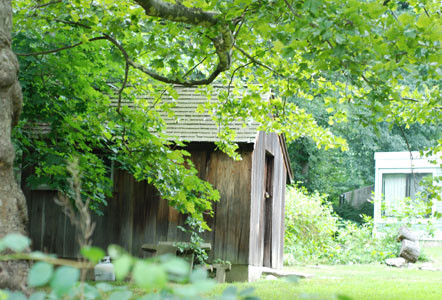
Home Structural Products & Services, Stairlifts
Structural Products & Services, Stairlifts
Furniture, Clocks,
Accessories
Antiques, Folk Art,
Fine Art, Auction Houses
JAMES DROUGHT AND THE CONNECTICUT REVOLVING HOUSE
By Max H. Peters
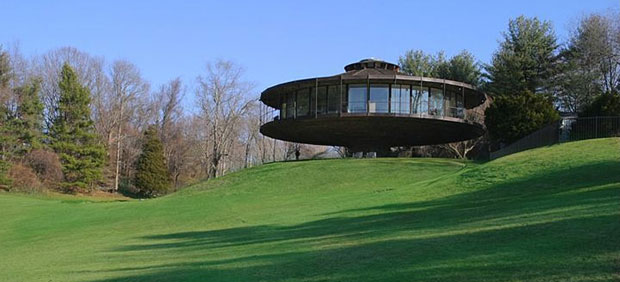
The revolving house in Wilton is for sale. Usually referred to as the Round House, If you fancy a home that can turn 360 degrees in 48 minutes, looking out at constantly changing rural scenery, it can be yours for $1.75 million.
The house was built as his primary residence in 1968 by modernist architect and Phillip Johnson partner Richard T. Foster . Together with Johnson, Foster designed a long list of notable cutting-edge buildings, including the Kline Biology Tower at Yale and the Bobst Library at New York University .
|
In 1963, in a shed behind an eighteenth century house in Norwalk, writer James Drought started Skylight Press. Drought, who came to the east coast from Illinois in 1959 to edit Saga, one of the most popular men’s magazines of its day. At some point n the early ‘60s, the same thing happened to James Drought that had happened to Walt Whiman more than a century earlier. Drought was gripped with a creative passion that wouldn’t be denied. |
| Drought dropped out of the mainstream publishing world, started printing his own books, then went around selling them at colleges out of the back of his station wagon. One of the products of Skylight Press was the 1964 novel The Enemy, which tells the story of Roby Roy O’Reilly, a holistic-minded architect who designs a revolving house remarkably similar to the Round House. O’Reilly, an admirer of Louis Sullivan (“Form follows function, function creates form.”), becomes completely obsessed with the mass potential for revolving houses. He goes broke because the market didn’t exist, as it doesn’t exist today. O’Reilly was a hundred years ahead of his time, at least. |
|
A number of Skylight Press were picked up by major paperback publishers. In 1965 Fawcett Crest published a soft-cover edition of The Enemy and distributed them to thousands of stores across America. Like the revolving house, The Enemy was decades ahead of the mainstream market and did not go into a second edition. Two years after the paperback edition of The Enemy came out the Round House went up in Wilton.
The question of whether or not Richard Foster got his idea for the revolving house from James Drought’s novel is not a matter of who gets credit. It’s possible that Foster never saw a copy of The Enemy or read any of the reviews of it. If that is the case, it is a remarkable example of how intensely the creative winds were blowing across two adjoining towns in southwest Connecticut in the early ‘60s. You have to hand it to Foster for actually building the thing and living in it.
The Round House was renovated in 2005 and is on its way to becoming a National Historic Site. The Enemy should be back in print. It is nothing less than a prophecy of collective environmental consciousness and retains the same power to inspire that it had when it first appeared.. As Roby Roy O’Reilly says in the book, “It was a beautiful shape, but a belief too, a way of life that gave the whole shape its energy, warmed it up like a living thing and allowed it to express freely the interaction of humanity with nature.”
James Drought died in Westport in 1983 at age 52. One sees more than a hint of the Skylight Press spirit in the paintings of his daughter, Sara Drought Nebel. Following this article is a selection of her paintings of old houses in and near her home in Madison.
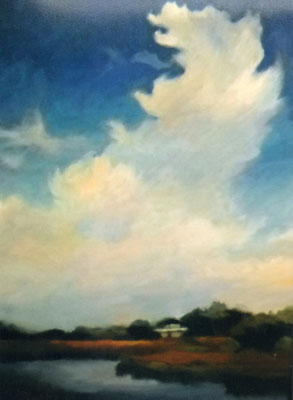 |
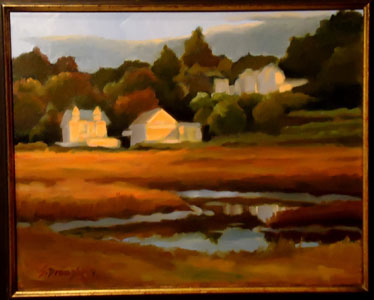 |
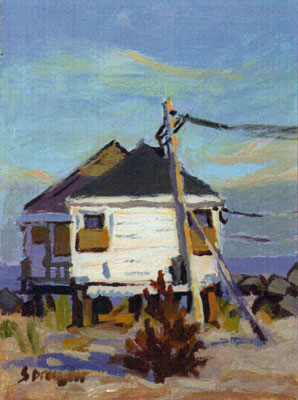 |
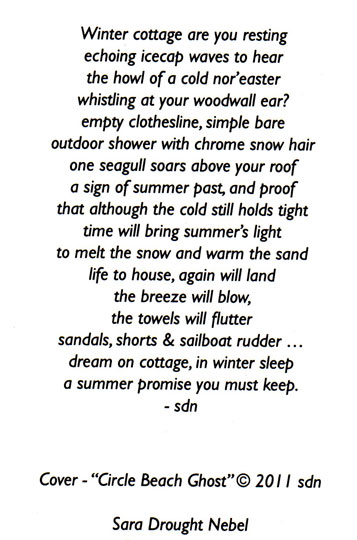 |

